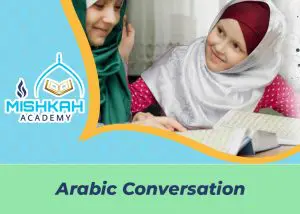How To Say Yes In Arabic
Table of Contents
ToggleIn Arabic, the word for “yes” is “نعم” (na’am). This simple word holds a lot of importance in Arabic-speaking cultures as it is often used to signify agreement, approval, and acknowledgement.
Firstly, “na’am” is frequently used in everyday conversations as a form of agreement. For example, if someone asks if you would like to go out for lunch, you would respond with “na’am” to indicate that you are interested. This type of usage highlights the idea that “na’am” is a word that emphasizes agreement and acceptance.
Moreover, “na’am” can also be used to give approval or show appreciation. For instance, if someone presents you with a gift, you might respond with “na’am” to express your gratitude. This type of usage highlights how “na’am” is an important part of showing respect and positive social interactions.
In addition, “na’am” is also sometimes used to signify acknowledgement or confirmation of a statement. For example, if someone asks you whether you speak Arabic, you would respond with “na’am” to confirm that you do. This usage of “na’am” emphasizes the importance of direct communication and getting to the point in Arabic-speaking cultures.
Lastly, the word “na’am” holds symbolic meaning in the Islamic religion. Muslims believe that when Allah asks a question, the answer is always “na’am”. The idea behind this is that saying “yes” to Allah’s commands and will is the key to obtaining His blessings and rewards.
In conclusion, “na’am” is a powerful word in the Arabic language that holds a lot of cultural and religious significance. Whether used to show agreement, approval, acknowledgement, or in the context of Islam, “na’am” is a word that is deeply ingrained in Arabic-speaking cultures and reflects the values and beliefs of that society.
Start learning Arabic from the comfort of your Home with the Best Online Arabic School
Learn Quran, Arabic & Islamic Online
Arabic Conversation Course
Online Arabic classes have recently become a popular mode of learning for individuals seeking to learn or improve their Arabic language skills. Students no longer need to attend physical classes; instead, all they need is access to the internet and a device such as a mobile phone, tablet, or a laptop. Such classes have advantages that include flexibility, ease of access, and affordability.
One of the significant advantages of online Arabic classes is flexibility. Unlike traditional classroom learning, students do not have to attend classes at designated times and dates. The flexibility offered by online Arabic classes makes it easier for students with busy schedules or those who live in different time zones to participate in the learning experience. Students can access course materials at any time, enabling them to complete coursework at their own pace, and learners can save time and money they would have used to travel to physical classrooms by taking online Arabic courses.
Another advantage of online Arabic classes is that they are generally more accessible compared to traditional classroom learning. Students do not have to relocate to cities or countries where Arabic is predominantly spoken to access high-quality learning resources. Online classes connect learners with renowned Arabic language teachers worldwide, and some of these teachers come from Arab countries, giving learners access to native speakers. Additionally, students can access online classes from anywhere in the world as long as they have a reliable internet connection.
Cost is another factor that makes online Arabic courses appealing to many learners. Traditional Arabic language courses often involve significant expenditures such as travel expenses, books, and tuition fees. Online classes eliminate the need for such expenses and offer students affordable alternatives to traditional classroom learning. Also, course materials on online platforms are free, adding to the affordability factor.
Finally, online Arabic classes are designed to cater to individual learning styles. Many online classes offer a personalized approach to learning, where learners can interact with teachers, ask questions, and receive prompt feedback. Such personalized instruction allows students to improve their conversational skills by receiving immediate corrections to their written or spoken language.
In conclusion, online Arabic classes offer a flexible, accessible, and affordable mode of learning the Arabic language. With the ability to access language teachers and course materials online from anywhere globally, this mode of education has become a leading method for students looking for an efficient way to study Arabic. Indeed, the rise of online education has revolutionized traditional classroom learning, and online Arabic classes are no exception. With the diverse methods of learning offered by online Arabic classes, there has never been a better opportunity to learn the Arabic language.
FAQs
Arabic Yes
“Yes” in Arabic is “na’am”, which is used to affirm or acknowledge something. The word “na’am” is derived from the root word “nawm” which means “to be present” or “to exist”. In Arabs culture, saying “yes” is considered an important aspect of politeness and respect. Not saying yes to a request or offer can be seen as rude or insulting.
When using “na’am”, the tone and context are very important. It can be said firmly, softly, or even with a raised pitch to show excitement or enthusiasm. It can also be repeated to emphasize agreement or assurance. In addition to verbal communication, nods, and hand gestures can also be used to express “yes” in Arabic.
“Yes” in Arabic is not only used to confirm actions and decisions, but it also signifies approval, gratitude, and willingness. It’s a word that shows unity and understanding. “Na’am” is a simple yet powerful word that can make a difference in building relationships and fostering positive interactions between people. Therefore, it’s important for individuals to learn how to say “yes” in Arabic to effectively communicate and respect Arab culture.
How to say yes in Arabic
Yes is an important word in any language. It is the word used to express agreement, acceptance, and affirmation. In Arabic, the word for yes is “نعم” (na’am). It is a simple word but has a lot of cultural and linguistic significance. This essay will explore the importance of “Yes” in Arabic, its usage, and some common expressions related to this word.
Arabic word “نعم” is a simple yet powerful word that denotes agreement, affirmation, and gratitude. Its usage varies depending on the context and cultural norms. Furthermore, the word has a deep religious significance in Islam, where it’s used to depict God’s blessings. As a result, the word has become an important part of Arabic language, culture, and religion.
How do you say yes in Arabic
In Arabic, “Yes” is not just a word used to express agreement with a statement or question. It is also a sign of respect and politeness. It is customary in Arab culture to respond with “na’am” to show that you have understood and acknowledged what someone is saying. It is also seen as a gesture of humility and modesty, as it indicates that you are humbling yourself to the speaker by agreeing with them.
How do u say yes in Arabic
The word “na’am” is used in different ways depending on the situation. In formal situations, such as business or professional settings, it is common to use the slightly more formal version of “na’am,” which is “نَعْمَ صَدَقْتَ” (na’am saddaqta). This translates to “Yes, you are correct.” This expression is used to show agreement and confirm that the speaker’s statement is accurate.
How to spell yes in Arabic
Another use of the word “Yes” in Arabic is to express gratitude and appreciation. It is common to say “نَعْمَ، شُكْرًا” (na’am, shukran) when thanking someone. This expression is used to show appreciation and gratitude for something someone has done or said. It is a polite and respectful way to express thanks.
how to write yes in Arabic
Many common expressions in Arabic use the word “Yes” to convey a range of sentiments. For example, the phrase “نَعْمَ سِرّنَا” (na’am sirrna) means “Yes, we kept it a secret.” This expression is used when someone has been successful in keeping information confidential. Similarly, the phrase “نَعْمَ، سُمِّيتَ” (na’am, summita) means “Yes, you are named.” This is used to confirm someone’s name.
What is yes in Arabic
“Yes” is an essential word in Arabic language and culture. It has multiple meanings and usages, and it is used to signify respect, politeness, and gratitude. Whether in formal or informal settings, “na’am” is a powerful expression that conveys a range of emotions and sentiments. It is a simple yet powerful word that is deeply ingrained in the Arabic language and its culture.
How to say yes and no in Arabic
In Arabic, “yes” is “na’am” and “no” is “laa”. These two words are essential in daily conversations. To understand the significance of “yes” and “no” in Arabic, it is crucial to appreciate the cultural nuances behind their usage.
Firstly, it is important to note that unlike in English, “no” in Arabic is not always a straightforward denial. Depending on the context, it can also indicate disagreement, uncertainty or even respect. For example, when a person is asked a question by someone of higher authority, they may respond with “laa” as a sign of respect rather than an actual “no.” It is also common for Arabs to use “laa” as a way of expressing disagreement while avoiding confrontation.
“Na’am” is used to affirm or agree with a statement or question. It can also show respect and politeness in some situations. In the Arab culture, saying “yes” in response to an invitation or a request is seen as a sign of good manners and hospitality. The use of “na’am” can also convey a sense of enthusiasm or positivity in a conversation.
Yes and no in Arabic
There are several different tones and inflections used when pronouncing “yes” and “no” in Arabic. This is because the language is heavily reliant on context and intonation to convey meaning. For example, a slightly higher-pitched “na’am” can indicate excitement or eagerness, while a lower-pitched “laa” can show disappointment or disapproval.
In some dialects of Arabic, such as in Egypt and Lebanon, “aywa” and “laa” are used instead of “na’am” and “laa”. These words have the same meaning as their counterparts but are used more frequently in casual conversations. Similarly, the use of hand gestures or facial expressions while saying “yes” or “no” can also add emphasis to the meaning of the words.
Arabic yes no
The use of “yes” and “no” in Arabic can also reflect cultural values and beliefs. In Arab societies, maintaining social harmony and avoiding conflict is highly valued. As a result, “no” is often softened or expressed more politely to avoid offence. Saying “yes” in response to an invitation or request is also seen as a sign of courteousness and generosity.
The use of “yes” and “no” in Arabic goes beyond their literal meaning. They reflect a complex cultural system of communication, respect, and politeness. Their nuanced use in daily conversations highlights the importance of understanding cultural differences in communication. Arab culture places great value on politeness and harmony. Therefore, it is crucial to be mindful of the tone and context in which “yes” and “no” are used while interacting with Arabic speakers.
Translate yes Arabic
“Yes” is a common word used in many languages to express agreement or affirmation. In Arabic, “yes” is translated as “نعم” which is pronounced as “naam”. The word “نعم” is a simple yet powerful word that is often used in Arabic conversations, whether it’s formal or informal. In this essay, we will explore the meaning, usage, and cultural significance of the Arabic word “نعم”.
Arabic word for yes
“نعم” is a word that denotes a positive response to a question or statement. It is used to express agreement, approval, or confirmation. For example, if someone asks you, “Do you want tea?” You can simply say “نعم” to indicate that you do. The word is also used to affirm a statement. For instance, if someone tells you, “The weather is beautiful today,” you can say “نعم” to confirm that you agree with them.
Say yes in Arabic
The usage of “نعم” varies depending on the context. The word can be used in formal and informal conversations. In a formal setting, people tend to use “نعم” along with “نعم فعلا” (naam fa’alan), which is more emphatic than simply saying “نعم”. In informal conversations, people use “نعم” more frequently and tend to shorten it to “نم” for convenience.
Yes I do in Arabic
The Arabic language is rich in cultural significance, and the word “نعم” is no exception. The use of “نعم” in Arabic culture is seen as a sign of politeness, respect, and honor. In many Arab countries, people use the word “نعم” instead of “yeah” or “yes” to show their appreciation for the conversation partner. Moreover, Arabic speakers use “نعم الله” (naam Allah) as a form of thanksgiving to God for his blessings.
Yes I know in Arabic
the word “نعم” has a deep religious significance in Islam. The Quran, the holy book of Islam, uses the word “نعم” extensively to depict God’s blessings. Muslims believe that whenever they receive a blessing, they should say “الحمد لله” (Alhamdulillah) which means “All praise is for God”. In some Islamic traditions, Muslims are encouraged to say “نعم” three times after a meal to show their gratitude to God.
Yes in Arabic pronunciation
Yes is a word that has a powerful impact on our daily lives. It can signify approval, agreement, or simply confirm that something is true or will happen. In Arabic, the word for yes is “naam”. Arabic is spoken by approximately 420 million people worldwide, making it the fifth most spoken language in the world. The use of “naam” varies across different dialects and contexts.
Yes in Arabic slang
In the classical Arabic language, “naam” is the standard word for yes. It is used to confirm agreement or to respond positively to a question. This formal usage is often seen in language textbooks and official documents. In everyday speech, however, Arabic dialects often use variations of “aywa” or “eeh” instead of “naam.” These dialectal variations are more casual and commonly used in conversation.
Yes in Arabic translation
Arabic is a language that is rich in nuances and many words that appear simple at first glance have multiple meanings. “Naam” is no exception. Depending on the context, “naam” may also express surprise or incredulity. For example, if one is presented with an unexpected gift, they may respond with “naam?” to express their surprise and gratitude.
Yes in Arabic writing
In some Arabic speaking countries, especially in the Gulf region, it is customary to use “naam” in conversation as a form of politeness. Responding with “naam” instead of a simple “yes” is considered more respectful and courteous. This take on using “naam” highlights the importance of Arabic culture’s emphasis on politeness and respectful communication.
In conclusion, “naam” is a crucial word in Arabic that is used in various ways and contexts. Its multifaceted meanings highlight the complexities of the Arabic language and its significance in cultural communication. The use of “naam” in Arabic illustrates the value of politeness and courtesy in the language’s culture.


























